Blog readers may have been wondering about the lack of travel activity – there are too many reasons for this to make an explanation worth reading but fear not, the 2010 travel season has just started. It will be less adventurous than last year but enough (we hope) to keep you interested.
0530 am on a cold May morning sees us getting into a taxi on the way to the airport for a few days in Italy – first Bologna and then Gubbio in Umbria. Despite RyanAir being the airline that everyone loves to complain about, one cannot fault their prices and usually their time keeping. Today is no exception and our cheap flight to Bologna takes off on time and arrives slightly ahead of schedule to the usual horrible RyanAir fanfare. Travelling hand luggage only (sacrifices were made by Mrs P), means that within 20 minutes of landing we are on the bus heading into town which is only 6 kms from the airport. One more impressive thing is that the Italian bus driver speaks English – the reverse would be a little unlikely in the UK.
Why Bologna? It has the world's oldest university (1069); Mozart, Rossini and Donizetti trained there; an opera house (1763) older than La Scala; food markets; three works by Michelangelo; one of the oldest operating theatres in the world; two major towers dating back to the 1500’s one of which leans more than the one in Pisa; and ice cream. It is also on our list of places to visit before we fall apart.
On a short trip such as this, it is always better to stay as close to the centre as you can, Trip Advisor offered a number of hotels in the city centre, we
chose L'Albergo delle Drapperie because of its price, its location and the fact that most of the reviews were favourable.
As an aside, using reviews to assist a choice can be a risky business because they are all personal and subjective. I take every review with a pinch of salt, ignore those which are very gushy and seem to have been written by a member of the hotel staff (or a close relation) and take an averaged view of the rest. Negatives again have to be noted with care but sometimes common themes at least give a warning. Another factor is how many reviews the reviewer has submitted – if this is their first then keep the salt handy, if this is their thirtieth then they are likely to be an experienced traveller and both more objective and reliable. Many travellers do use reviews to assist them, our review of a hotel in Bristol was read over 100 times within a few weeks of posting.
The Italian love of food is well known, our hotel is in the middle of one of
the numerous food and flower markets in the town where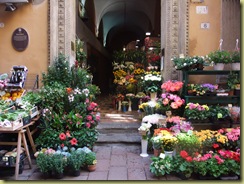
lots of very small shops around every corner selling incredibly fresh and mouth watering food.
fish so fresh it is almost still wriggling
hand made tagliatelli
We passed a few hypermarkets on the way into the city but within the city
centre it seems that fresh, locally grown food is still available
the great pity of course is that we have no way of cooking anything. This freshness and love of food does however pass right down the food chain. Our hotel advised eating at nearby pizzeria that evening, the salad was one of the freshest we have eaten and the pizzas were superb and with good draught Italian beer, the bill came to 15 euro each.
Bologna is the home of Bolognese Sauce (no surprise) but here they do not have it with Spaghetti (surprise) but with Tagliatelle and in the area around the hotel are many cafes boasting home cooking – it is indeed good as our dinner on the second night at a local restaurant around the corner proved to us. We were the only tourists eating there which is surely a good sign.
Our general plan when we make a short visit to a city is to roughly follow one of the numerous walks you can find in guide books or on the internet but also to dive down any interesting alley ways which you pass on the way. Because (as the title of this blog says) you never know what is around the corner.
Around the corners we dived down, we found a variety of rather interesting art-deco / French influenced shop signs / old wall furniture
Some buildings (here the Casa Azzoguidi) still in regular use whose woodwork dates from the 13th century (and shows it)
The original soffit decorations are still visible 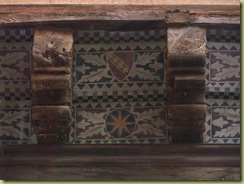
In the Jewish Ghetto quarter, the reason for the design is said to be that the Jews were forbidden from living outside of the Ghetto (dating from the
1500s) and therefore they built upwards and outwards.
Bologna is of course full of the most ornate churches Italian Catholicism can devise – most churches close for lunch, perhaps a statement about Italian values – stomach before faith? You can read about the churches in any guide book so the general details will not be repeated here.
However within on of the side chapels of the Basilica of St Petronius,
is a working Foucault’s Pendulum which was used by Foucault to prove that the earth rotates.
Also on the floor of the church is a meridian line (dating from 1655) marked off with longitude and latitude which functions as a sundial in It was designed by Giovanni Domenico Cassini who was teaching astronomy at the University. At 66.8 metres long, it is the longest sundial in the world. If you want to know how it works, click here.
In the middle and late middle ages it was the done thing (if you were wealthy) to build a tall tower as a part of your house and at one time there were over 200 of them. It is said that straight tall towers became so common that it became the fashion to build them with a slight lean.
The towers and gateways of Bologna feature in a number of paintings
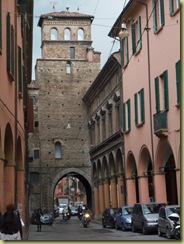 | 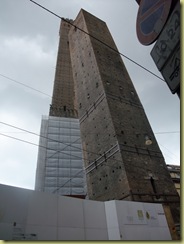 |
dating from the early 16th century as this details from an enormous painting
in the Bologna National Gallery by Guido Reni shows:
One of your intrepid travellers climbed the tallest of the towers in the picture above, the 97.1m Asinelli Tower (all 520 steps) to get a view of the city from its highest point. The staircase (which is not really wide enough for the person going up to pass a person coming down) is an example of a brave wooden construction with more faith than engineering in its design. Climbing it is
hard work and psychologically you are not helped by the fact that as you climb, you see a platform above and think that is the top but it is not and you have to keep climbing. There are five of these platforms to negotiate on the way up. The view from the top is well worth the effort:
Gradually the towers have been demolished (four as recently as the early 1900s) and currently only 21 remain.
The Italian love of ice cream is not a secret and just adjacent to these towers is one of the most famous ice cream shops in the city – four
flavours later, we were ready to continue our tour.
The National Gallery is tucked away at the end of the University Quarter and it a great 4euro experience and a good example of a well designed gallery. What was particularly nice was that it was not crowded and you could get really close to the paintings and browse without hassle. The gallery has art dating from the mid 1200s and the majority of it has a religious theme. Amongst our favourites were this 15th Century extract from a Fresco by Ercole Roberti (1450-1496)
Volto di Maria Maddalena planganta painted around 1480
and Negazione di Pietro by Gall8i painted around 1610
and this cross by Andrea di Bartolo dating from around 1420.
There were hundreds more.
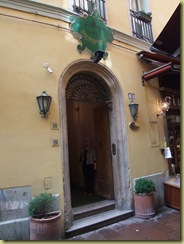
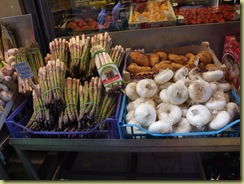
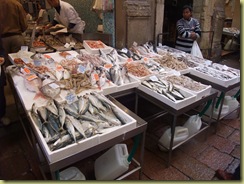

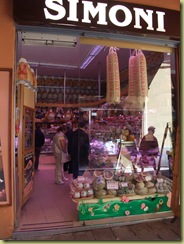
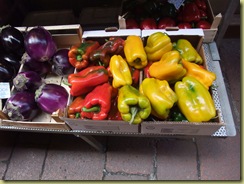
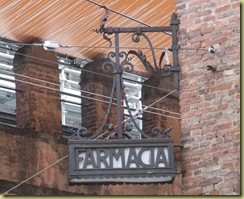
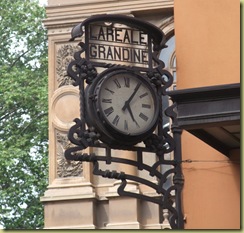

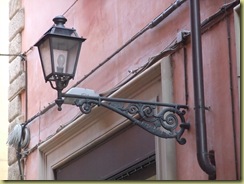
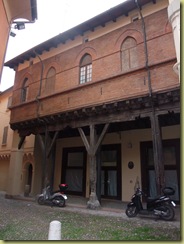
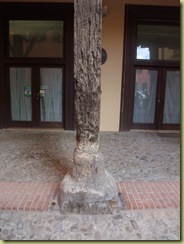
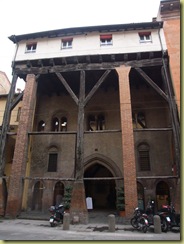
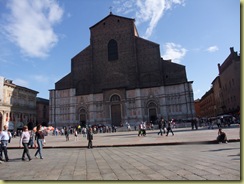

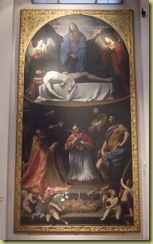
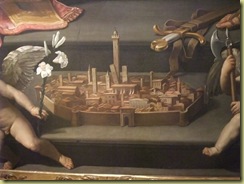
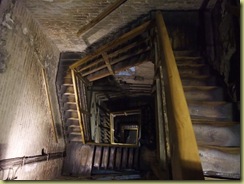
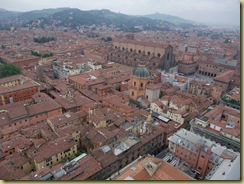
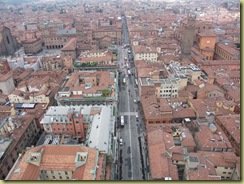
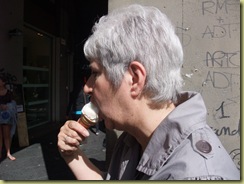


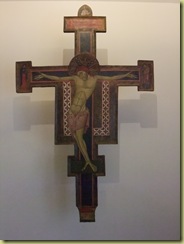
No comments:
Post a Comment